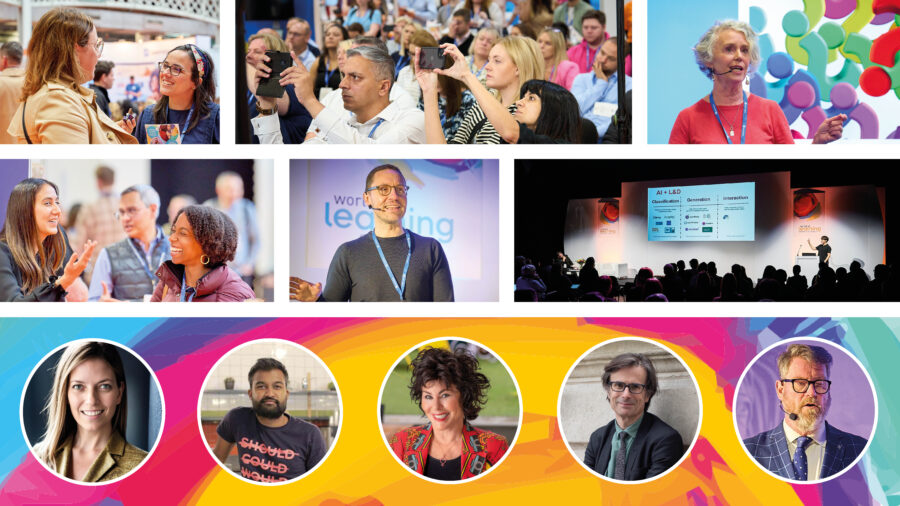Globally, more than 60% of organisations reported a skills gap as the top barrier to business transformation.
This gap is only expected to grow with six in ten employees requiring training before 2027 and the global talent shortage expected to exceed 85 million people by 2030, according to the World Economic Forum.
Many organisations are looking to move to a skills-based approach to recruitment and talent management, thereby making effective, flexible, and continuous skills development opportunities even more important.
Workplace learning programs
Workplace learning programs are business-critical nowadays because they allow individuals to acquire the critical and emerging skills needed in their industry to achieve positive outcomes and remain competitive. These programs are integral to creating organisational agility, supporting employees’ work readiness, and crucially filling the talent and skills gaps.
learners can fit into five types of diverse learning profiles
Furthermore, holistic learning experiences can also help retain and engage top talent, prioritising employee wellness and creating more functional teams.
Employees who receive these opportunities are more likely to feel a greater sense of inclusion and are more likely to stay with the organisation that prioritises them.
Individual learner styles
Every learner is different, and recent Udemy research found that learners can fit into five types of diverse learning profiles based on their learning preferences, motivations, and barriers to learning.
These profiles included:
- The Devoted Learner, who is self-motivated and has varied interests across multiple topics.
- The Social Learner, who is success-driven and externally motivated.
- The Confident Learner, who is proactive and seeks a challenge
- The Emerging Learner, who prefers guidance and is building their confidence in learning
- The Practical Learner, who prefers comfort and structure over challenges
For learning programs to deliver maximum results for employees and companies alike, leaders need to create tailored, accessible, and engaging experiences for individual learners with distinct learning preferences.
Therefore, how can an organisation provide an effective learning experience for a diverse group of learners?
Tailoring skills development to diverse learner profiles
When learning leaders and managers consider how to personalise learning experiences for different learner profiles, they should first identify the type of learners in their team.
While all learners benefit from practice, some learn best through hands-on application, whereas others learn better through different settings such as on-demand, immersive, classroom, or cohorts.
Every learner is different
This is something to consider when identifying the right learning platform or partner for the organisation, and often, having a variety of learning options may present an effective solution.
Providing professionals and teams access to learning content through the medium they prefer will only result in better learner engagement, understanding, and improved learning outcomes.
Balancing group and individual learning preferences
Across the various learner profiles, there are significantly different preferences for learning in groups and self-studying.
Considering whether an individual sees learning as a sole pursuit or one that should take place through social interaction can help employees retain information better and upskill in the long run.
These preferences can be linked to a desire to control the pace of learning or connected to what motivates the learner, albeit whether they are driven through competition with others or simply by making their own progress.
For example, Udemy’s research on global learners found that:
- Devoted, Confident, and Practical Learners prefer learning alone, while Social Learners prefer to learn in groups.
- Interestingly, Confident Learners prefer studying alone but enjoy comparing their progress with peers, which can intimidate Emerging Learners.
- For Emerging Learners, it is likely best to offer them an alternative experience to the other groups or to carefully structure opportunities that bridge the different groups and their preferred approaches to learning.
Understanding learners’ motivations to optimise engagement
If a learner intrinsically values a learning experience, they are more likely to understand the value of engaging with or completing that experience.
Therefore, if learning leaders can understand what creates intrinsic value for their employees, they will promote deeper engagement, helping learners become more invested in their learning goals.
However, different learner profiles are motivated by diverse factors, such as whether learning is outcome-specific or open-ended, as well as what the ultimate goal is when learning.
For example:
- Both Confident and Devoted Learners are highly engaged and proactive, yet they each have their differences when it comes to motivation.
- Confident learners are almost entirely motivated by how learning helps them accomplish specific outcomes and how it can help them build a skill or competency that they can apply in their lives.
- Devoted learners are at the other end of the spectrum. They are driven to learn by a joy for learning and a desire to build their knowledge rather than seeking a specific outcome.
To address the global skills gap, businesses must adopt a skills-first approach to talent management and implement tailored workplace learning programs that empower organisations to stay competitive.
Learning leaders can start by recognising diverse learner profiles and their motivations to provide personalised learning experiences that enhance engagement. This will not only support organisational agility but also support employee retention and career development.







